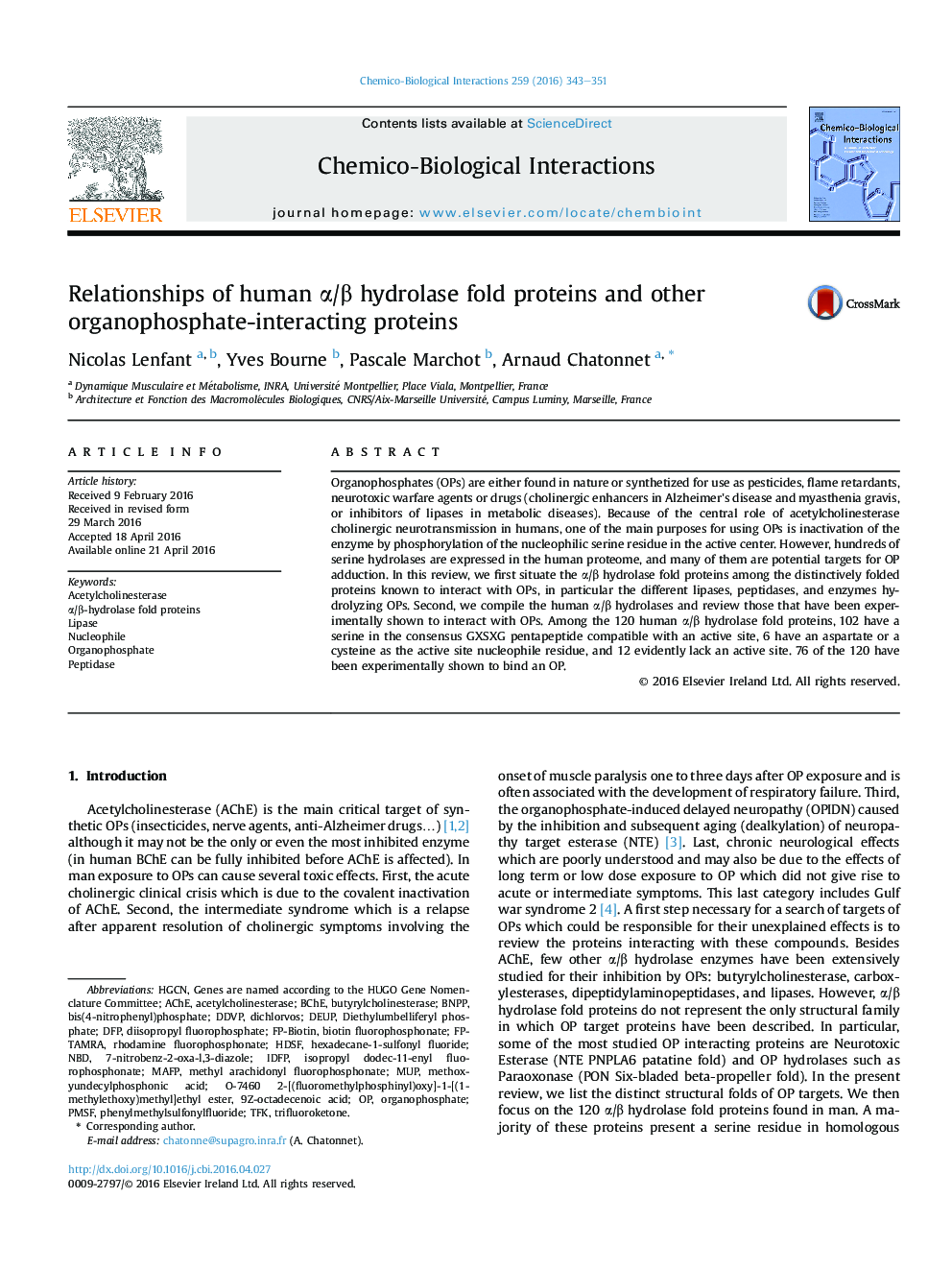| Article ID | Journal | Published Year | Pages | File Type |
|---|---|---|---|---|
| 5559544 | Chemico-Biological Interactions | 2016 | 9 Pages |
â¢Among the 120 human α/β hydrolases fold proteins.â¢102 have a serine in the consensus GXSXG pentapeptide compatible with an active site.â¢6 have an aspartate or a cysteine as the active site nucleophile residue.â¢12 evidently lack an active site.â¢76 of the 120 have been experimentally shown to bind an OP.
Organophosphates (OPs) are either found in nature or synthetized for use as pesticides, flame retardants, neurotoxic warfare agents or drugs (cholinergic enhancers in Alzheimer's disease and myasthenia gravis, or inhibitors of lipases in metabolic diseases). Because of the central role of acetylcholinesterase cholinergic neurotransmission in humans, one of the main purposes for using OPs is inactivation of the enzyme by phosphorylation of the nucleophilic serine residue in the active center. However, hundreds of serine hydrolases are expressed in the human proteome, and many of them are potential targets for OP adduction. In this review, we first situate the α/β hydrolase fold proteins among the distinctively folded proteins known to interact with OPs, in particular the different lipases, peptidases, and enzymes hydrolyzing OPs. Second, we compile the human α/β hydrolases and review those that have been experimentally shown to interact with OPs. Among the 120 human α/β hydrolase fold proteins, 102 have a serine in the consensus GXSXG pentapeptide compatible with an active site, 6 have an aspartate or a cysteine as the active site nucleophile residue, and 12 evidently lack an active site. 76 of the 120 have been experimentally shown to bind an OP.
